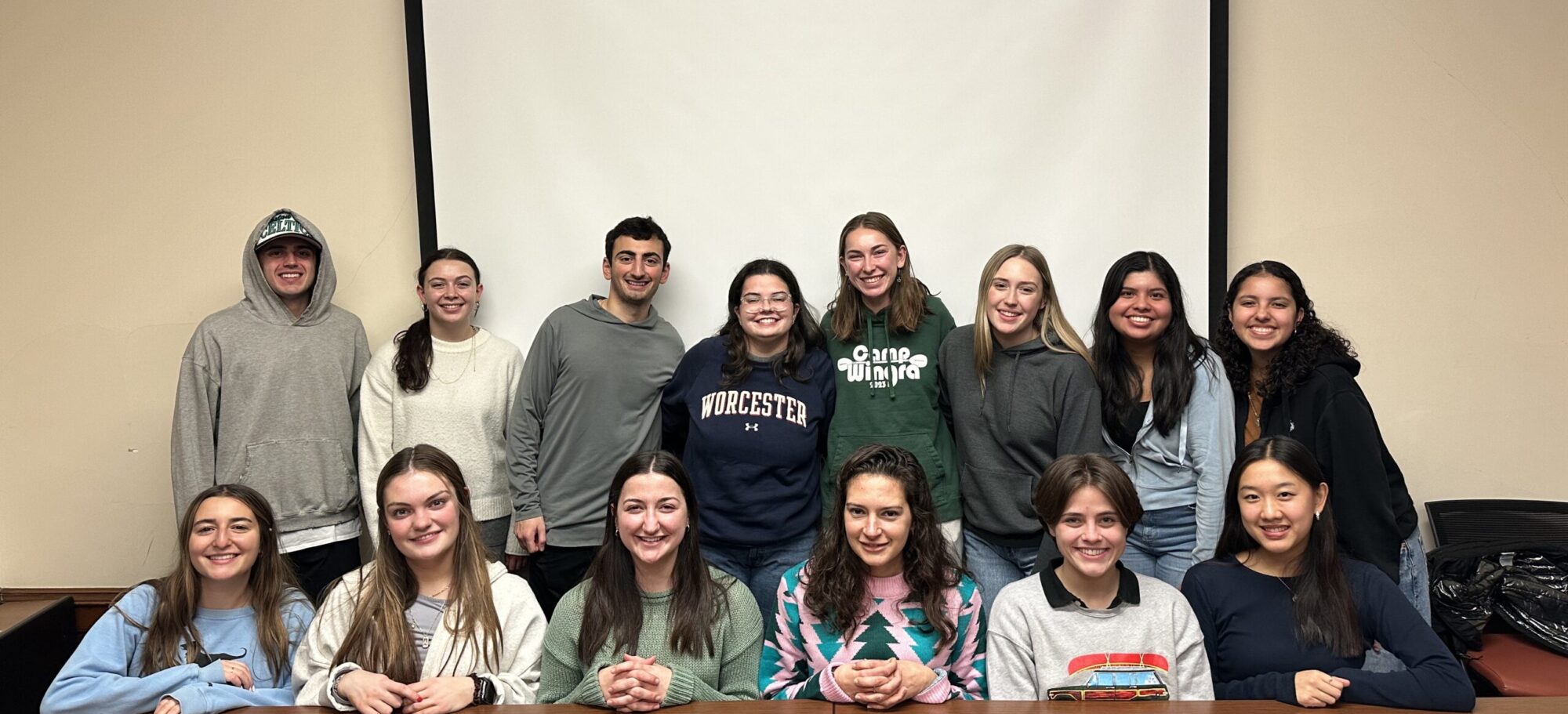The CBL intern selection for the next academic year brought me one step closer to college graduation. Seeing how passionate the prospective interns are, I was reminded of the same enthusiasm I wished to bring to the work I do, and I asked myself if I have fulfilled my commitment in serving other students and the Worcester community at large. As I look back and reflect upon how much I have grown as a person through my encounters and engagement with Community-Based Learning, I have nothing but gratitude towards those who encouraged me, touched me, and inspired me both intellectually and spiritually.
I took two CBL courses in my senior year. An interdisciplinary course in Community Engagement and Social Justice with Dr. Sterk-Barret and Liberation Theology with Professor Eggemeier, which gave me the perfect opportunity to participate in direct service and channel my learning into deeper understanding.
I spend on average three hours a week immersing myself at Dismas House, a halfway house that assists former inmates to rejoin the Worcester community. Apart from interacting with the residents occasionally, I have been given a variety of tasks in being able to understand the work of Dismas from within. Everything from filing paperwork to soliciting donations through phone calls, budgeting office supplies to grant writing, the skills I acquired and the stories I collected from CBL are not replicable in a classroom setting. The welcoming staffs at Dismas have given me enormous trust and opportunities for growth by teaching me new things in all aspects of the organization (budgeting, lobbying, farm operation, etc.). Their kindness pressures me to be at my best at all times, and I constantly ask myself, what can I bring to the community that is distinct from their own employees? What are the urgent issues facing the organizations that we, as college students can help address and resolve?
Of course the answer is not easy, but CBL is an avenue to explore the open-ended questions with humility, diligence and innovation.
First, we learn about the marginalized section of the society by humanizing the population we would not have had contact with otherwise. Recalling a presentation I did about homelessness, I focused heavily on unsheltered homelessness over sheltered homelessness. Our tendency to portray homelessness as sign-holding males on the street limits our capacity in imagining the rest of sheltered homeless population and their struggles. Through “hanging out with” the residents at Dismas, I came to realize that providing a shelter is not an end goal but only a beginning of the mission; a full integration requires a network of long-term support to provide people with a dignified environment for possible self-development. What is missing from the numbers and charts in textbooks is the human aspect of “social problems”, the understanding that it is not only the time and money that these residents have lost during their sentences, but also the social safety net, confidence, and in many occasions, love and trust from their surroundings. Our education rarely addresses poverty in such non-economic terms, yet it is one of the most urgent appeals I have come to witness through CBL.
Second, sometimes the seemingly trivial and repetitive tasks in service yield great importance to organizations, but the back-scene is often dismissed because they are not as obvious to be linked to a cause. I remember the days when I spent hours going over historical files to identify the needed documents to sort them into alphabetical order. I must admit, it was not the most pleasant job of all, but someone would have had to do it for administrative and assessment purposes. If I could be the one to alleviate the burden of the other staff, why not treat it as a rewarding process? At the beginning, I often resented writing proposals for a small grant, but later when I heard that the executive director and the resident fellow spend the majority of their time writing grant proposals, I felt it was naïve for me to cherry-pick the tasks I enjoyed doing without looking at the bigger picture. The reality of a non-profit organization is not as glorified as the front-stage service to the population being served, and we should not overlook the fundamental building blocks of a well-operated organization.
Third, I believe that there is something about us as young college students that allows us to contribute to our community partners in a unique way. One day when I was chatting with a long-time resident at Dismas House, he commented on the inconvenience of job-hunting since the shelter did not have a computer even though they had Wi-Fi, and the transportation to the public library is also quite limited. Most residents do not have a personal laptop to write their resume, not to mention the barriers they face when searching for employment. This reminded me of the recent upgrade of our computers in the library, and I visited ITS on campus after work that day. Within a couple e-mails, an old computer was being donated along with a keyboard and a mouse! Today, a corner of the living room is set up as the work-station for the residents to browse the Internet at any time.
There are many other instances that remind me of how privileged I am to enjoy the education I have today: No matter what we leave off at our sites during the CBL hours today, we are the ones who come home with knowledge and experience, step on the next phase in our journey, and carry on with our own lives. However, I believe the impact CBL’s experience leaves on us is not ephemeral. The justice-seeking lens we acquired and the promise we made to the communities shall transcend time and space to the next chapter in our lives, to the other communities we care about. And that is one promise I would like to keep from this point on in my life.


